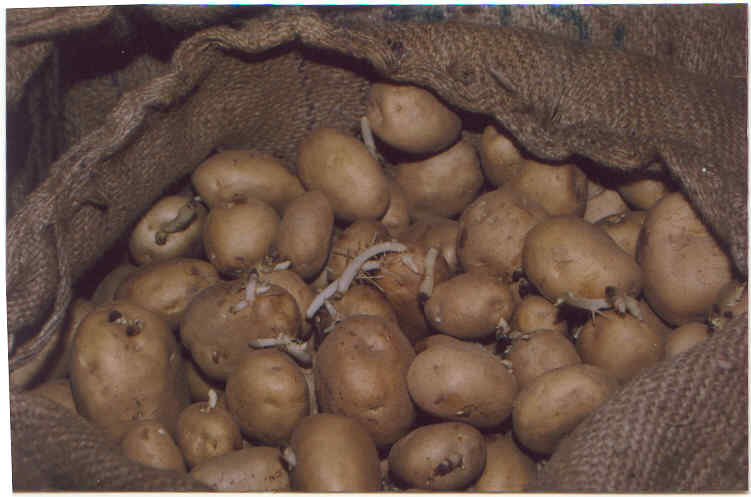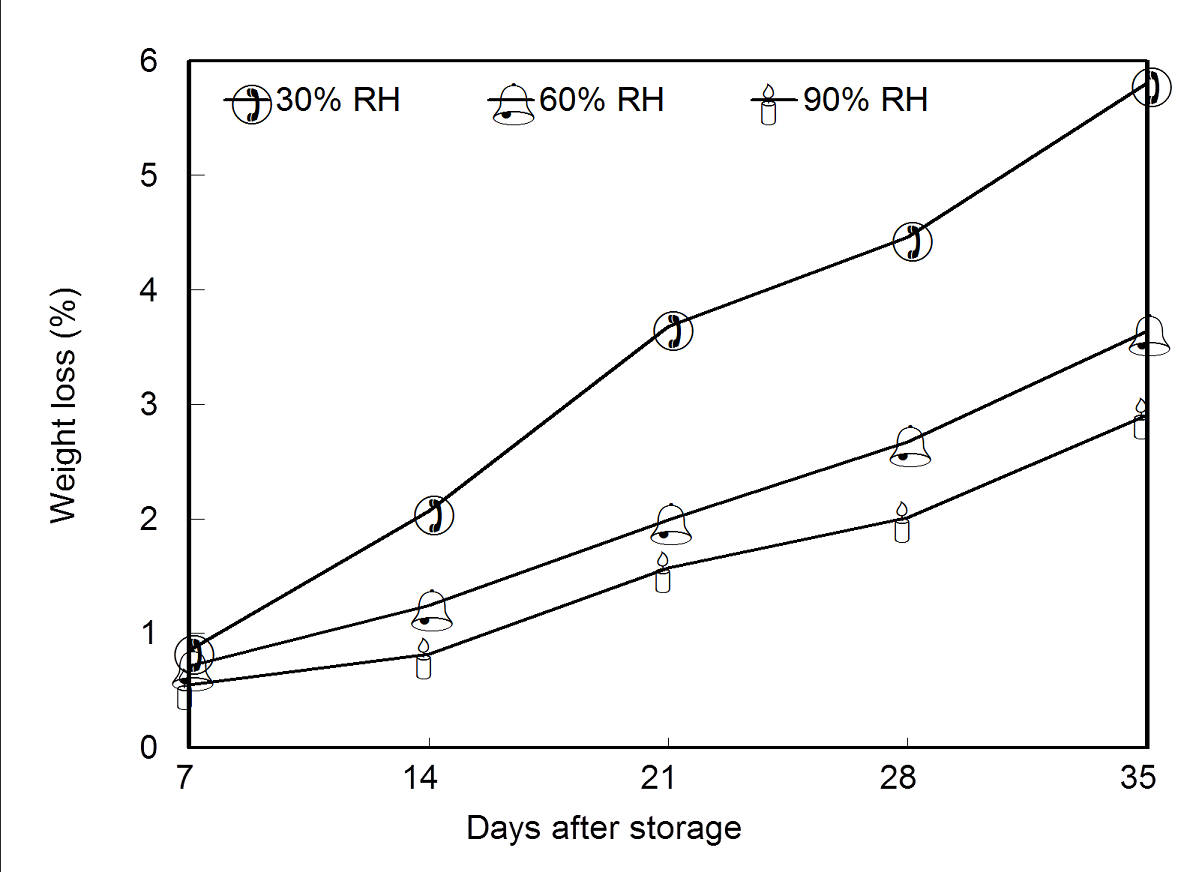
Physiological losses:

Respiration and evaporative loss of water from tubers result in physiological losses in potatoes. The magnitude of these losses depends largely on the environmental conditions. Two important storage environmental factors that affect the storage behaviour of potatoes are temperature and relative humidity. Physiological losses occur through natural respiration and evaporative loss of water through skin which is the result of magnitude of environmental conditions. Respiration rate varies with variety and response to storage temperature. In general, tuber respiration is relatively high at low storage temperatures, decreases as storage temperatures increase, and then increases again as storage temperatures are elevated. Weight loss is greater during the early part of the storage season due to higher tuber respiration rates, higher storage temperatures for wound healing, and greater transpiration. The relative humidity of the storage also affects transpirational weight loss and hence, it is recommended that relative humidity should be kept as 95% or above.
Optimal holding temperatures for potatoes in storage depend on the potato variety and the intended end use of the product. Physiological damage can occur from exposure to high or low temperatures both before and during storage. Physiological weight loss is the most relevant quality reducing process. Respiration is a natural biochemical process under the physiological activity of the tuber tissue. It can be controlled by an appropriate temperature control to reach and keep low physiological activity of the tubers. Respiration consumes oxygen and as a result converts starches to sugar. The tuber cell, oxidize glucose into nutrient that is required by tuber to stay alive, produce water, carbon dioxide, heat and byproducts. The heat produced in the process reduces the relative humidity of the air within the cells, also increases water holding capacity and continues moisture loss through evaporation from tuber skin. Respiration also increases when tubers are mishandled, transported over rough tracks or subject to bruises or cuts. For most varieties, temperatures above 15oC may cause dramatic increases in respiration.
Evaporation on the other hand is a physical process which can be managed by controlling the storage environment in terms of temperatures, air humidity and air flow rate. It should be taken into consideration that temperature change in storage should be made in gradual way. This gradual temperature reduction results in little changes in the sugar content of tubers and also avoids deterioration of quality of processed product quality. Most of the tuber shrinkage that occurs during the first month of storage results from water lost before the completion of the wound healing process. Maintaining high relative humidity in potato storage prevents some of the early season tuber dehydration and helps controlling the total shrinkage during the season. Shrinkage in storage is directly proportional to the length of the storage season and inversely proportional to the relative humidity conditions maintained within the store. The recommended RH in stores is 95% or above for minimizing early storage tuber losses due to dehydration.
 |
|
Effect of different relative humidity levels on the weight loss in sprouting tubers of Kufri Chandramukhi (Storage temperature 28-30°C) |